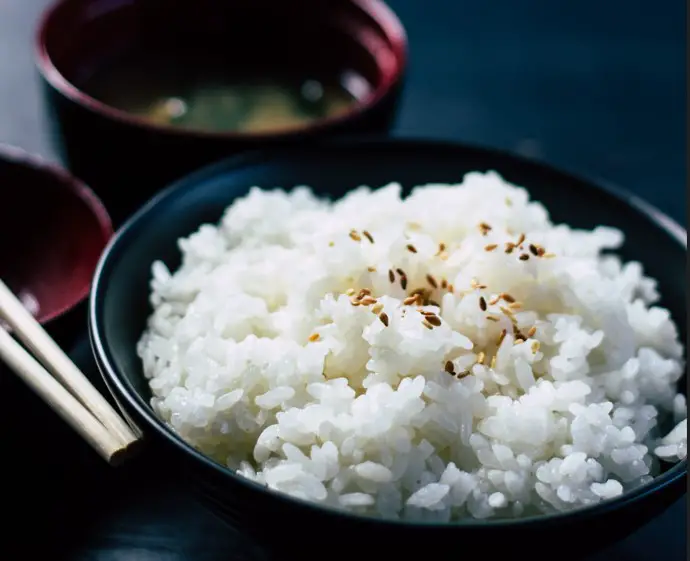Stir fry is one of those quick and versatile dishes that can be as simple or as complex as you want. It’s one of my go-to meals when I want something flavorful and nutritious without spending a lot of time in the kitchen. However, despite its reputation for being a fast and easy dish, stir fry can sometimes turn out soggy or lack that crispy texture you’re craving.
If you’ve ever ended up with a plate of limp veggies and soggy meat, don’t worry—you’re not alone. Soggy stir fry is a common problem, but the good news is that there are a few simple tricks and techniques you can use to avoid it. In this post, I’ll go over why stir fry can get soggy and share tips on how to keep your stir fry crispy, vibrant, and delicious every time.
1. Use the Right Pan
The type of pan you use can make a huge difference in the texture of your stir fry. A wok is the traditional pan for stir frying because of its shape and ability to distribute heat evenly. However, if you don’t have a wok, a large, heavy-bottomed skillet or sauté pan will do the trick too. The key is to use something that allows you to spread the ingredients out in a single layer, rather than overcrowding them.
Why a Large Pan is Important:
- Even Cooking: A larger pan provides enough space for the ingredients to cook quickly and evenly. Overcrowding causes the ingredients to steam instead of fry, leading to a soggy stir fry.
- Higher Heat: A bigger surface area helps you achieve that crispy texture you’re after by allowing the ingredients to get a good sear.
So, when making stir fry, make sure your pan is big enough for all the ingredients to move around and not be stacked on top of each other. If you’re making a large batch, it might be worth cooking in batches rather than trying to cram everything into one pan.
2. Use High Heat
One of the keys to a great stir fry is cooking at high heat. Stir frying is a fast cooking technique that relies on quick, high heat to get that crispy texture. If the heat is too low, the ingredients will release too much moisture and start to steam rather than fry, resulting in a soggy stir fry.
Why High Heat is Crucial:
- Quick Cooking: High heat allows the ingredients to cook quickly, preserving their texture and flavor.
- Crispiness: The quick sear you get from high heat helps create that slightly crispy exterior on the vegetables and meat.
Before you add your ingredients, heat your pan or wok until it’s hot, then add your oil. You’ll know it’s ready when the oil shimmers or starts to slightly smoke. Once the oil is hot, add your ingredients in batches to avoid lowering the temperature of the pan too much.
3. Avoid Overcrowding the Pan
This is probably one of the most common mistakes that leads to a soggy stir fry. When you add too many ingredients to the pan at once, the temperature drops, and the moisture released by the vegetables and meat turns into steam. Instead of frying, the ingredients will end up being steamed, which leads to that soggy texture.
How to Avoid Overcrowding:
- Cook in Batches: If you have a lot of ingredients, cook them in smaller batches. This ensures the pan stays hot and the food gets that crispy texture.
- Give Space to Ingredients: Don’t just dump everything into the pan at once. Spread the ingredients out evenly so each piece gets direct contact with the pan.
It might take a little longer to cook in batches, but it’s worth it for that crispy, non-soggy stir fry.
4. Dry Your Ingredients Before Cooking
Moisture is the enemy of a crispy stir fry. If your vegetables or meat are too wet, they’ll release steam when they hit the hot pan, which makes everything soggy. Drying your ingredients before cooking can go a long way in helping to avoid this issue.
Tips for Drying Ingredients:
- Pat Dry with Paper Towels: After washing vegetables or marinating meat, use a paper towel or clean cloth to pat them dry. This removes excess moisture and helps the ingredients fry, not steam.
- Avoid Wet Marinades: While marinades are great for flavor, wet marinades can add extra moisture that causes sogginess. If you’re marinating meat or tofu, try to shake off any excess liquid before adding it to the pan.
By removing as much moisture as possible, you’re ensuring that your ingredients will fry properly and get that crispy texture.
5. Use the Right Oil
The type of oil you use can affect the overall texture of your stir fry. Some oils have higher smoking points than others, and choosing one that can handle the high heat of stir frying is crucial to avoid soggy results.
Best Oils for Stir Fry:
- Vegetable Oil: Has a high smoking point and neutral flavor, making it a great option for stir fry.
- Canola Oil: Another good choice with a high smoking point and mild taste.
- Peanut Oil: Often used in stir frying because of its high smoke point and subtle flavor, perfect for getting that crispy texture.
Avoid using oils with low smoking points, like olive oil, as they can burn at the high temperatures needed for stir frying, affecting the flavor and texture of your dish.
6. Add Vegetables That Cook Quickly
If you’re using a variety of vegetables in your stir fry, choose those that cook quickly over high heat. Some vegetables, like zucchini and bell peppers, have a high water content, and if you cook them too long, they’ll release moisture and make your stir fry soggy.
Quick-Cooking Veggies for Stir Fry:
- Bell Peppers
- Snow Peas
- Broccoli Florets
- Baby Carrots
- Mushrooms (but not too much!)
For vegetables that take longer to cook, like carrots or squash, consider cutting them into smaller pieces or blanching them before stir frying to speed up the cooking process and prevent excess moisture from being released during stir frying.
7. Add Sauce at the Right Time
Adding sauce is an important part of stir fry, but you want to make sure you’re adding it at the right time to prevent it from making the dish too watery. If you add sauce too early, it can cause the stir fry to become soggy by releasing moisture too soon.
How to Add Sauce:
- Add sauce towards the end: Add your sauce just before finishing the stir fry, allowing it to coat the ingredients and get absorbed without making the dish watery.
- Thicken the sauce: If you like a thicker sauce, mix cornstarch or another thickening agent with a bit of cold water and add it to the sauce before pouring it in. This will create a nice glossy finish without excess liquid.
8. Let the Stir Fry Rest for a Moment
After cooking, let the stir fry sit for a few minutes before serving. This gives the sauce a chance to thicken and helps any excess moisture evaporate, keeping the texture crisp. It also helps the flavors meld together, so it’s worth waiting just a little longer for an even better dish.
Final Thoughts
Stir fry should be quick, crispy, and full of vibrant flavor. If you’ve been struggling with soggy stir fry, the solution is often as simple as adjusting your technique. By using the right pan, cooking at high heat, drying your ingredients, and avoiding overcrowding, you can achieve the perfect stir fry with a crispy texture every time.
Next time you’re cooking stir fry, keep these tips in mind to avoid the sogginess and elevate your stir fry game. With a little practice, you’ll be making stir fry like a pro in no time!



